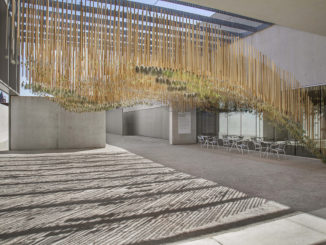
Recently, the open letter from architects (Grimshaw, Zaha Hadid, BVN, etc.)[1] to Autodesk about the lack of funding and investment in Revit has reignited the issues that landscape architects face with using Revit.
Landscape architects have seen the rise of Revit in our firms and universities due to the peer pressure of clients, architects, engineers and construction companies. Many landscape architects will quickly tell you that Revit is not the right tool for landscape architecture projects due to the complexities of modelling terrain, the lack of tools (especially softscape) and the steep learning curve in comparison with other 2D and 3D software packages. We, therefore, have to ask the question is Revit is the right software for our profession?
As landscape architects, we work with various different disciplines (architects, engineers, quantity surveyors, project managers and more) and the majority of these disciplines use Revit. To generalise the majority of those profesions are working with flat floors, modular elements and surfaces whereas landscape architects are dealing with existing terrain, modified terrain, grading, slopes and therefore when using Revit (and many other BIM software packages) we feel like we are trying to constantly find workarounds for problems (water bodies, triangulation, large file size) using with architecture tools (roofs, floors, etc) to create landscape designs. In short, we are trying to design landscapes with a sledgehammer, which becomes frustrating and lacks finesse. There are third-party plugins and tools such as CS Artisan (for an additional cost) which may fill the gap for some hardscape and softscape elements but the additional cost can be prohibitive for some firms.
Do landscape architects continue (or start) using Revit for designing landscape projects? The answer is dependent on the project scale, complexity and client requirements. For many projects Revit may not be the answer and AutoCAD, Vectorworks (also has BIM capability) or other software may be suitable for designing and documenting projects. For many firms, the cost of running AutoCAD and Revit (or a package) along with third-party plugins and addiontal training may reduce the adoption of Revit by landscape architects and they will only seek to use Revit when clients demand that they use the software.
The alternative is to drop Revit and use other software packages, however, as Revit is so ingrained into numerous design professions and the unwillingness for firms to jetson software subscriptions, training, and systems. As the large investment to adopt another package and subsequent seems too large for many firms.
Revit may not be the answer to our design software problems. Still, it is now up to landscape architects to seek out to push Autodesk to develop new tools and further develop existing tools such as Site Designer for landscape architects.
Is Revit the answer? by Damian Holmes – Editor of World Landscape Architecture and registered landscape architect working in Melbourne, Australia.
DISCLAIMER:
The opinions expressed in this article are those of the author. They do not purport to reflect the opinions or views of their employer or any company or organisation that the author may be a member or have an affiliation.
This article is for educational purposes only. The content is intended only to provide a summary and general overview on matters of interest. It’s not intended to be comprehensive, nor to constitute advice. You should always obtain professional or legal advice, appropriate to your own circumstances, before acting or relying on any of the above content.
References
[1] Autodesk AEC customers demand better value – AEC Magazine
Published: 25 July 2020
https://www.aecmag.com/comment-mainmenu-36/2046-autodesk-aec-customers-demand-better-value
Additional reading/resources
WLA has published some articles about the challenges of BIM in the past with links below
BIM and Landscape Architecture by Lauren Schmidt
Revit and Landscape Architecture: The Issues by Lauren Schmidt
Revit and Landscape Architecture: The Benefits by Lauren Schmidt
Creating your BIM plan to improve your efficiency by Damian Holmes
There are sessions on Autodesk University that you can access to understand the challenges and techniques that landscape architects can utilise to realise projects in
The Secret to Landscape Modeling with Revit – Autodesk University
Using AutoCAD Civil 3D to Create a Landscape Architecture BIM Model – Autodesk University
Landscape Architecture Revit Workflows for Collaboration and Documentation – Autodesk University
Revit and Dynamo for Landscape Architects – Autodesk University
Image Credit: https://trianglify.io/



